Easiest Sourdough Pie Crust (fresh flour & discard options)
Besides being easy and quick, this Sourdough Pie Crust has so much flavour. The sourdough adds just the right amount of tang while freshly milled flours add a lot of depth. It’s a lovely way to give any pie that little something extra without too much work. Bonus points: It’s also super easy to handle!
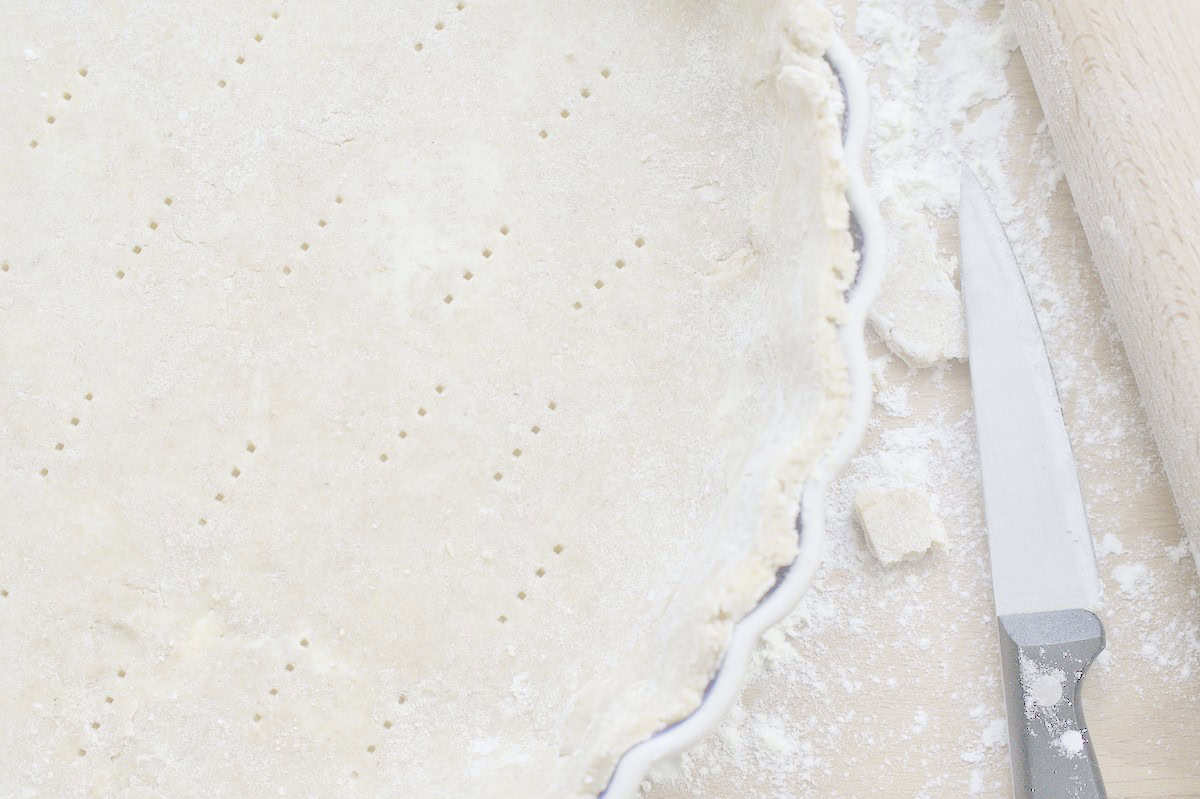
If you’re a fellow sourdough enthusiast, chances are you’ll be left with varying amounts of sourdough discard sitting in your fridge, just waiting to be put to good use. Instead of tossing it (please, don’t ever do that), why not turn it into something delicious? This basic sourdough discard pie crust is a simple and foolproof way to use up your discard while adding a good dose of flavour and flakiness to your pies.
It really is the easiest sourdough pie crust recipe
Whether you’re using refined flour, whole grain, or even freshly milled flour, this recipe adapts to whatever you have on hand. With just a handful of staple ingredients, you’ll have the perfect pie crust ready in no time.
Hands down, this is the easiest to handle pie crust I’ve ever used! It’s not sticky, rolls out well and is easily patched. I’ve never looked back!
Buttery and neutral, it’s great for both sweet and savory.
As written, the recipe yields enough for a bottom crust only, as this is what I use most often in my kitchen. So if you’re making a pie with a lid or lattice, you’ll want to double the recipe.
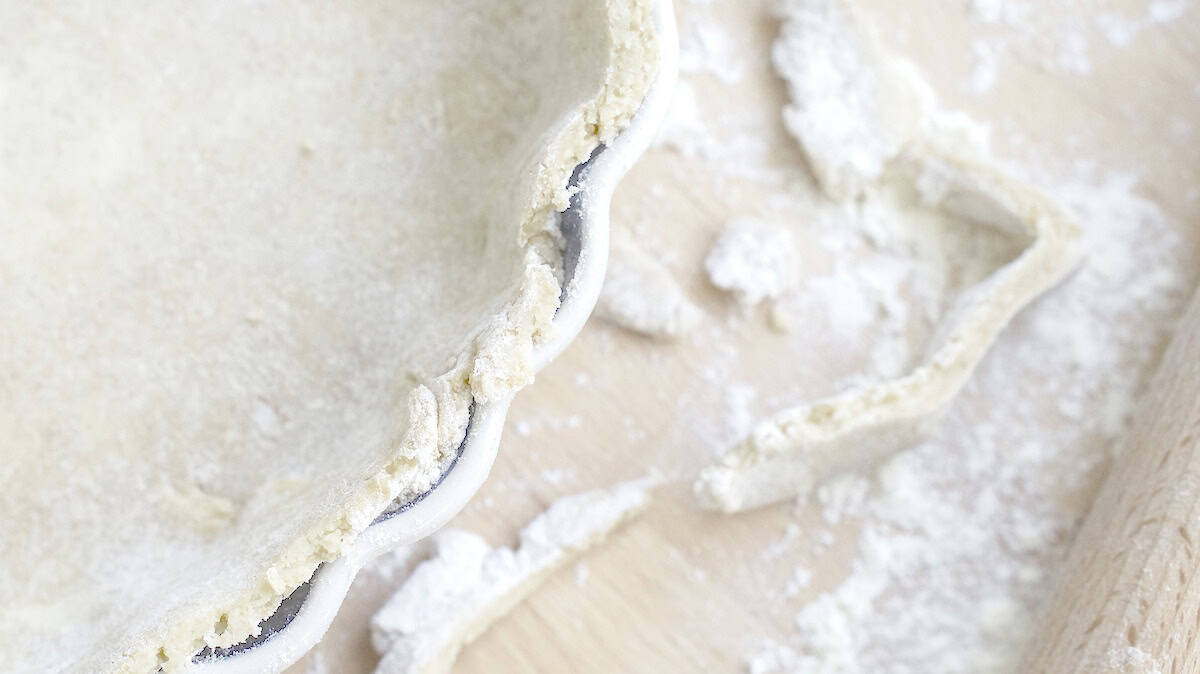
Ingredient notes and substitutions
Flour Any kind works! And I do mean that. I’ve used all-purpose, whole wheat, ancient grain, store-bought and freshly milled without any problems.
Butter Fridge-cold and cut into cubes. The secret to making a good pie dough is keeping the butter cold at all times. You need pockets of solid butter dotted throughout the dough to achieve a flaky crust. Once it hits the heat of the oven, the water in the butter will evaporate and the resulting steam will expand the dough, creating those flaky layers.
Sugar I keep the amount of sugar in my crust low as I find that whatever pie filling I add brings more than enough sweetness to the table. This way it also works perfectly for a savory quiche or tart.
Salt To balance the sugar and unlock all the flavours!
Sourdough starter Either active and bubbly or discard, it’s all good. If you want to use discard, you can use it straight from the fridge. The colder the ingredients, the better when making a pie crust!
Tools you may need
Pastry blender A handy little tool for cutting the butter into the flour without exposing it to the body heat of you hands. I swore by mine for the longest time until I was left high and dry in someone else’s kitchen someday. Turns out, regular old hands work just fine. So it’s a nice-to-have but not essential.
Silicone spatula Another nice-to-have tool for combining wet and the dry ingredients. Since the amount of liquid is so low, it takes a bit of manhandling to combine the ingredients and I find that a spatula actually does help with not heating up the butter. That way I only have to press in the very last floury bits by hand.
How to make the easiest sourdough pie crust
01
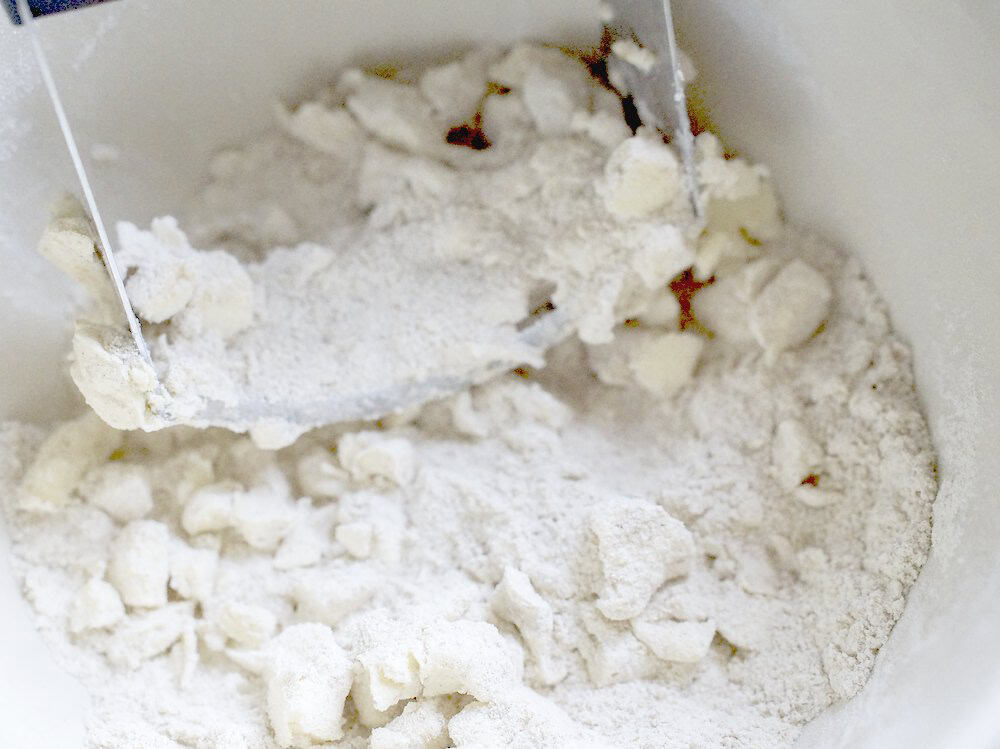
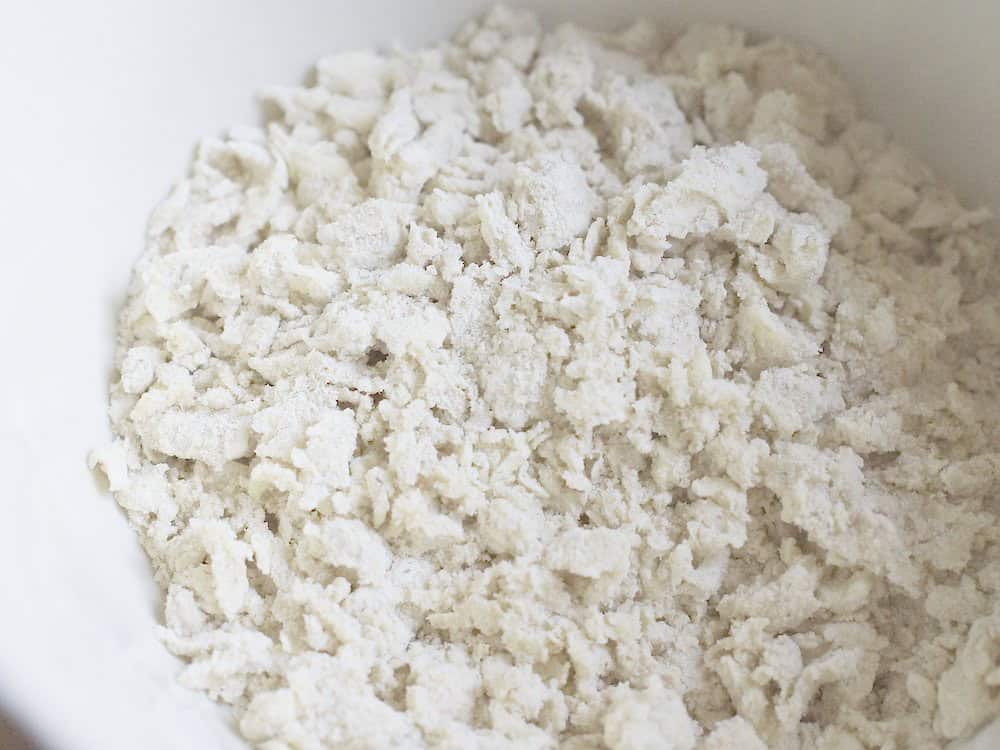
Mix the Dry Ingredients: To a medium bowl add flour, salt and sugar and mix until combined.
Cut in the Butter: Add the cold butter cubes to the flour mixture. Using either a pastry cutter, a fork or your fingertips, cut the butter into the flour until it looks like coarse crumbs with some pea-sized chunks of butter.
02
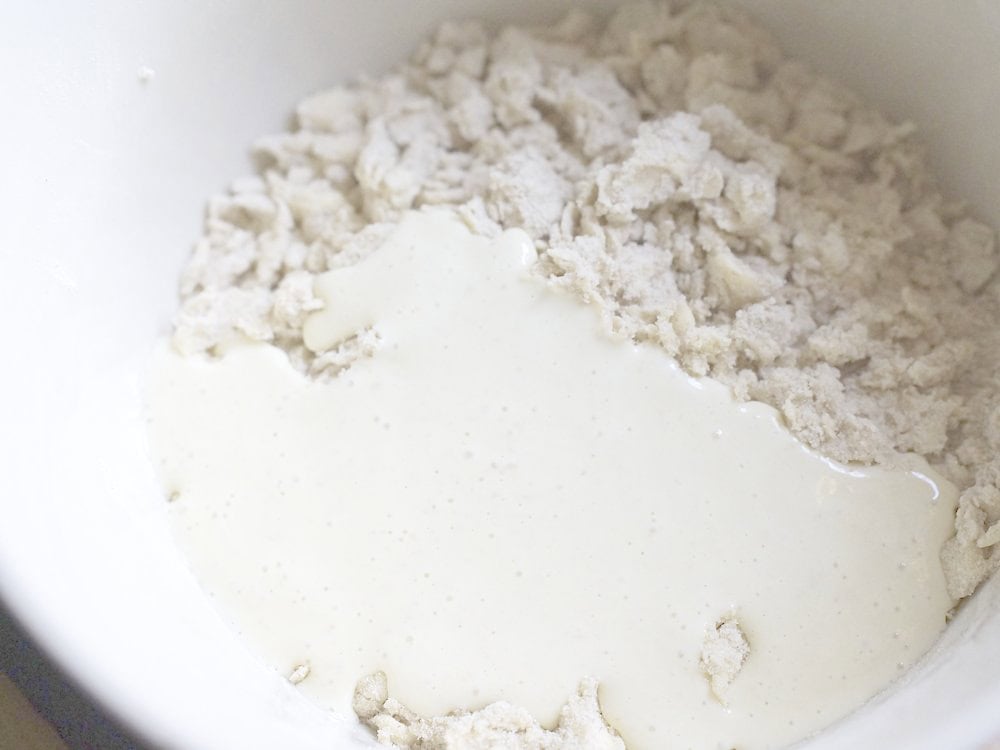
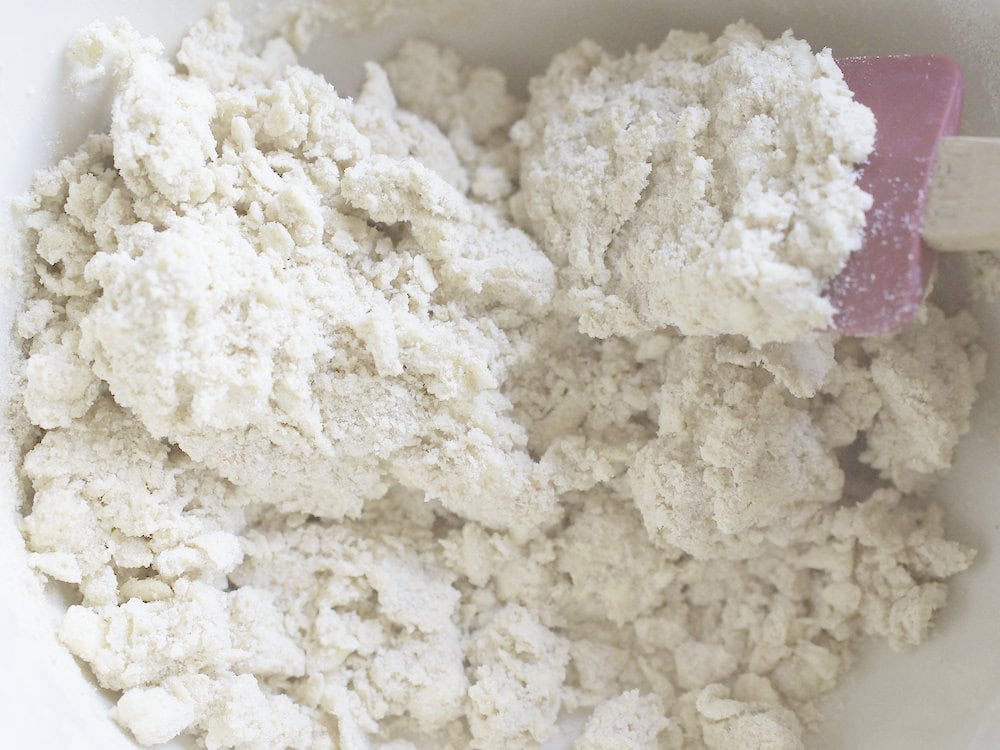
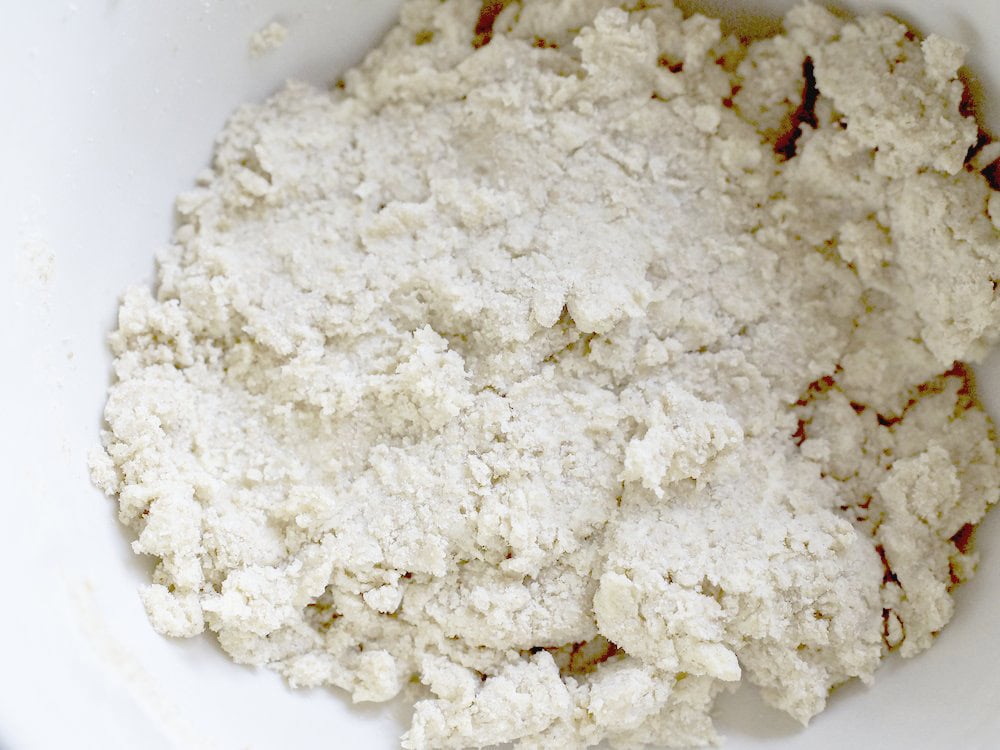
Add the Sourdough Discard: Stir in the sourdough starter or discard. Mix until the ingredients start to come together into a very shaggy dough. Press in the last stubborn dry bits into the dough with your hands. (See Variations for adjusting to different flours.) Avoid over kneading the dough.
03
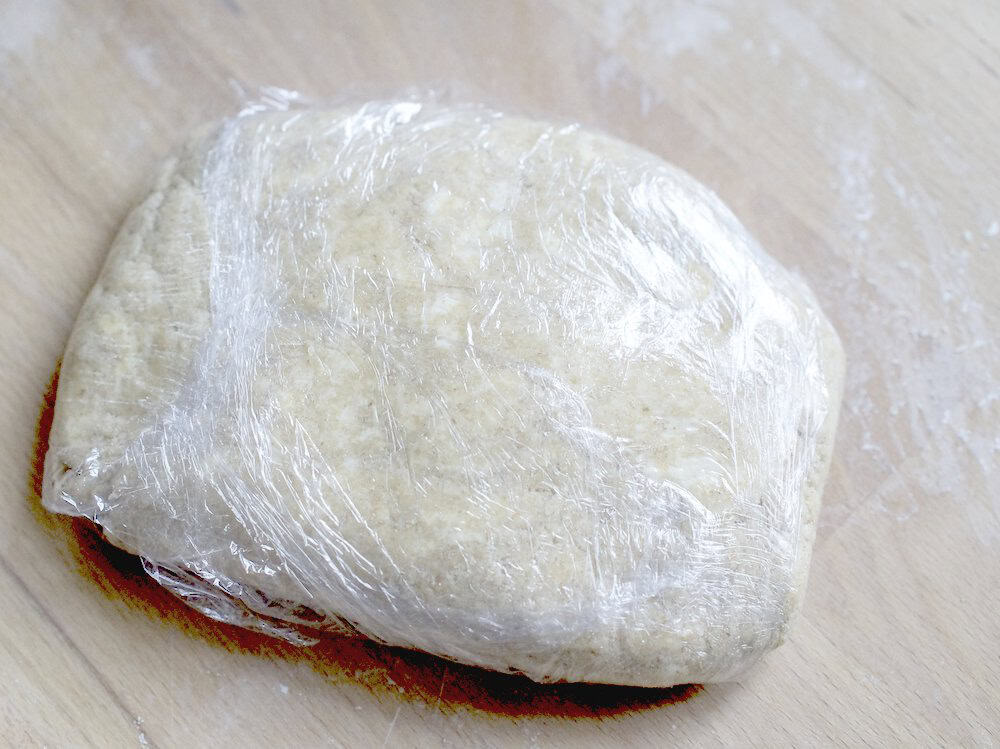
Chill the Dough: Form the dough into a ball, wrap it in plastic wrap, and press it down into a disc. If you doubled the recipe, divide in two and form two separate discs. Refrigerate for at least 60 minutes. This will redistribute the moisture throughout the dough. If you have time, letting it sit in the fridge for a day or two will make the flavours even better. You can keep it longer, but if you prefer less tang, use it sooner.
How to roll out sourdough pie crust
01
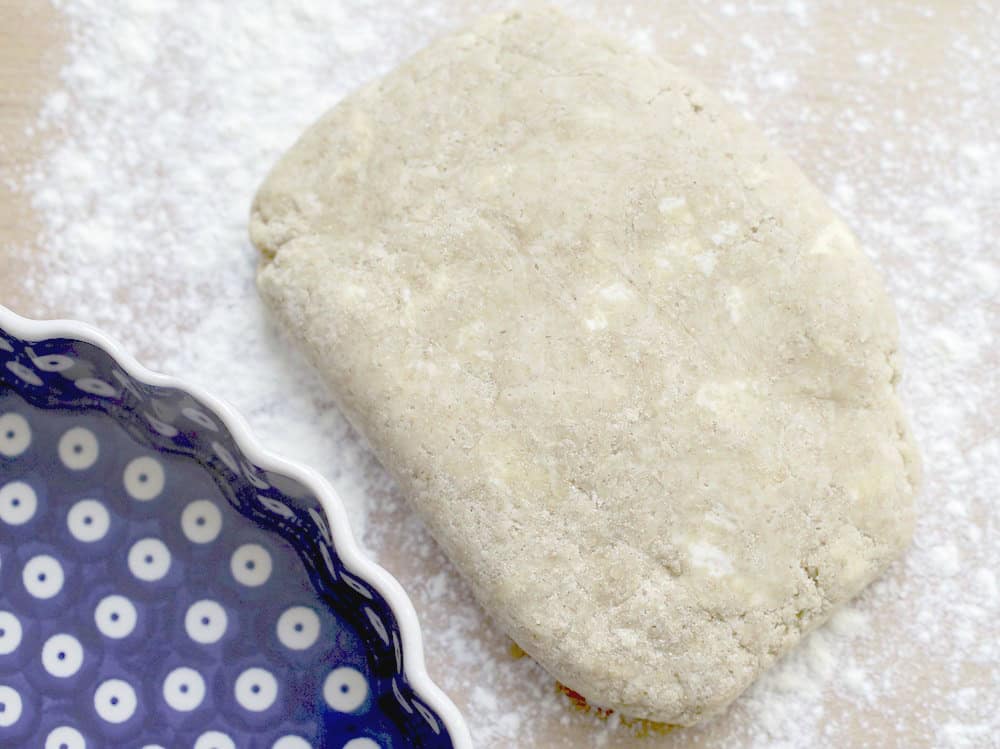
Remove one of the pie dough disks from the fridge. Keep your baking dish ready, we’re using it as a guide for rolling out the right size.
02
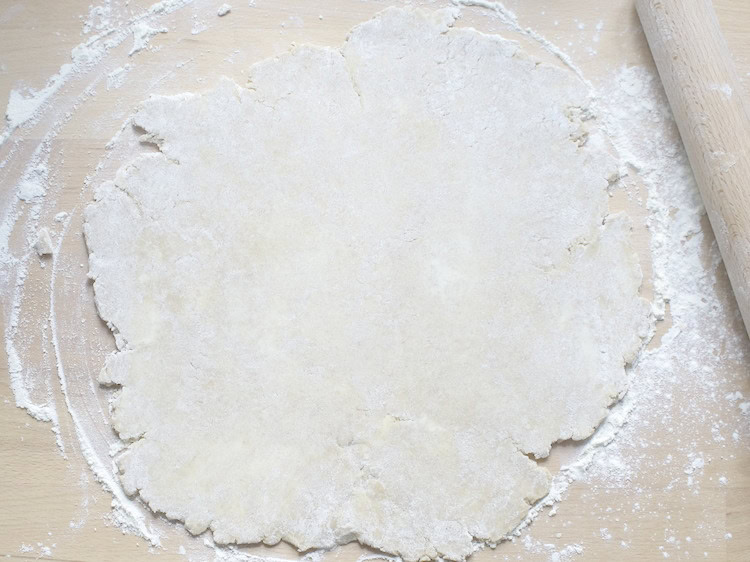
On a lightly floured surface, roll out the dough into a round that’s a little wider than your baking dish. Roll the dough a few strokes, then use your fingers to move the emerging circle around the floured surface. This ensures that the dough isn’t sticking to the work surface. The circle doesn’t need to be perfect.
03
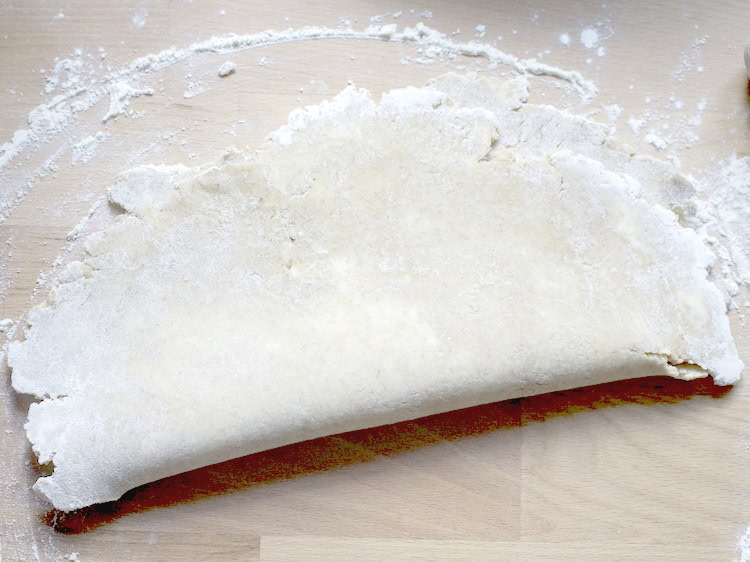
Gently fold the dough in half and lift the round from the floured surface and center in your baking dish. Gently press it into the bottom and sides.
04
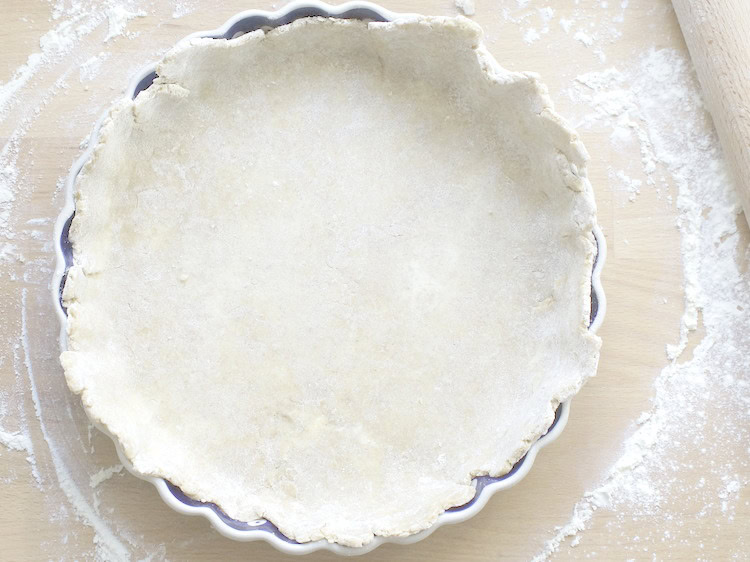
If the dough doesn’t quite reach up the sides or you got any tears, trim off some of the excess and use it for patching any holes.
05
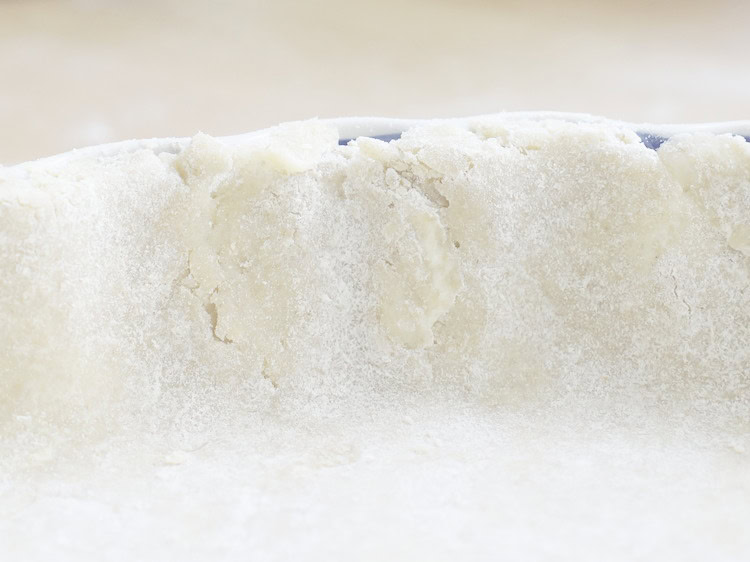
If making a tart, you can leave the edge rustic or trim it neatly to fit the pan. Place in the fridge while you roll out a top crust or put together the filling.
06
Roll out the top crust just as you did the bottom. Create a circle roughly the same size.
Remove the bottom crust from the fridge and gently pour the filling into the pie dish. Carefully drape the top crust over the filling. Trim the crust with a knife, leaving about 2 cm (3/4-inch) overhang.
With your fingers press the top and bottom crusts together and fold under. Use a fork or your fingers to crimp the edges of the dough. Cut four to eight decorative small slits in the top of the crust so any juices and steam can vent. Brush lightly with beaten egg (and sprinkle with sugar for a sweet pie).
Tips
- Since we measure the starter by weight, the difference in volume is not going to affect the outcome when switching between active starter and discard. If you don’t have a scale, add the starter gradually, only until a shaggy dough starts forming.
- The recipe yields a neutral pie crust, one that works for both sweet pies and savory tarts and quiches. If you prefer a sweeter crust for pies, you can add an additional tsp or two of sugar. You can also sprinkle the top crust of your pies with sugar after egg washing, which is what I prefer to do for a sweeter crust and extra notes of caramel.
- If the dough tears or has holes after moving it to the dish, patch it up with a bit of the extra dough you trimmed off the edge. If it won’t stick, dab a little water to help it bond. For bigger gaps, roll out a thin scrap and press it over like a pastry patch.
How to store and freeze sourdough pie crust
You can store the dough in the fridge for up to 3 days. As it sits, the flavour develops even more, but if you’re sensitive to strong sourdough flavours, you might want to use it within a couple of hours. I’ve kept mine for longer, but the tang can get pretty bold the longer it sits, so maybe reserve that treatment for a savory recipe!
If you’re not using it right away, freeze the dough! Just wrap it up tight and freeze it for up to a month. When you’re ready, let it thaw in the fridge overnight before rolling it out.
Variations
I usually mill my own flours, but store-bought whole grain, refined white or any combination of these are just fine. Here’s a quick rundown of different flours:
Kamut flour: For savory quiches or tarts, I absolutely love using Kamut flour. It’s an ancestor of hard wheat, meaning it makes a beautifully crispy, flaky crust.
Spelt and wheat flour: Their flavours are light and mellow and support a sweet treat effortlessly. They’re my preferred grains for sweet pies and tarts.
Einkorn flour: Since Einkorn is notorious for binding less water, I’d hold back about 2-3 tbsp of the starter at first and only add the rest if the dough doesn’t come together.
Rye flour: Rye absorbs more liquids, so you may need to add additional starter to get the ingredients to from a shaggy dough.
Another fun variation is adding spices like cinnamon for sweet recipes or finely chopped herbes for savory tarts. If you have leftover herb compound butter from your last barbecue—this is a good opportunity to use it up!
Try this crust with some of my pie and tart recipes!
Recipe FAQs
Ready to up your pie game? Let me know if you tried this recipe and if you loved the flavour of the crust! If it was a success, please share the recipe, give it five stars and leave a comment! Happy baking!
Easiest Sourdough Pie Crust
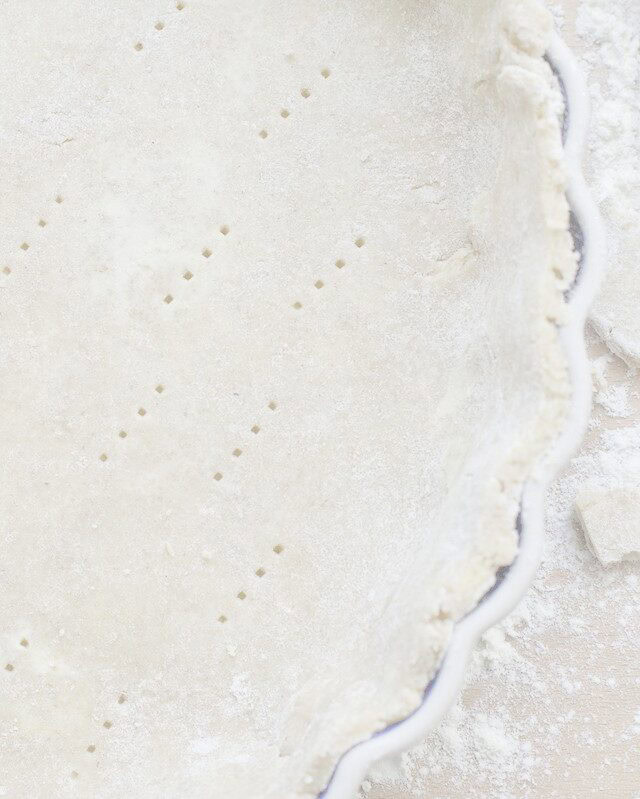
Equipment
- pastry cutter - (optional)
- silicone spatula - (optional)
- medium bowl
Ingredients
- 140 g flour - (see Notes) ~1 cup
- 1 tsp sugar - (see Notes)
- ½ tsp salt
- 115 g butter - (cold from the fridge, cut into cubes) ½ cup
- 120 g sourdough starter - (either active and bubbly or use discard straight from the fridge) ~½ cup
Instructions
Make Sourdough Pie Dough
- To a medium bowl add flour, salt and sugar and mix until combined.
- Add the cold butter cubes to the flour mixture. Using either a pastry cutter, a fork or your fingertips, cut the butter into the flour until it looks like coarse crumbs with some pea-sized chunks of butter. Work quickly, you don't want the butter to melt.
- Stir in the sourdough starter or discard. Mix until the ingredients start to come together into a very shaggy dough. Press in the last stubborn dry bits into the dough with your hands. (See Variations for adjusting to different flours.) Avoid over kneading the dough.
- Form the dough into a ball, wrap it in plastic wrap, and press it down into a disc. If you doubled the recipe, divide in two and form two separate discs. Refrigerate for at least 60 minutes or up to 3 days.
Roll out Sourdough Pie Dough
- Sprinkle your countertop with flour. Roll out the dough until it is a little larger in diameter than your pie dish. Rotate the dough often to make sure it's not stuck to the counter. Drape it over the pie plate and press in. Patch any holes or tears with excess trimmings. Add pie filling according to your pie or quiche recipe.
- Roll out the top crust, if using, and drape it over the filling. Press the top and bottom crusts together and fold under. Use a fork or your fingers to crimp the edges of the dough. Cut decorative slits in the top crust, brush with egg wash and bake according to your recipe.
Notes
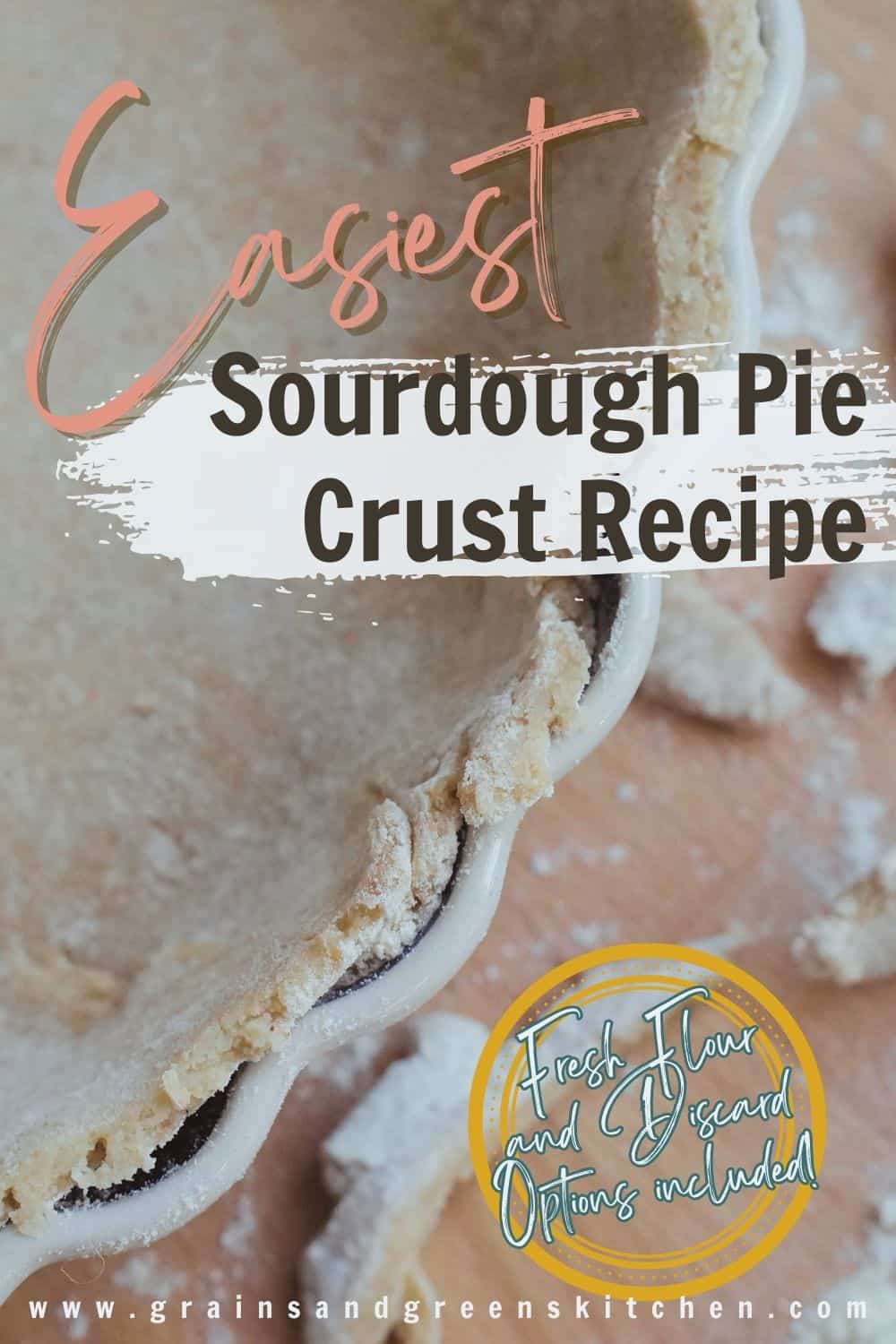




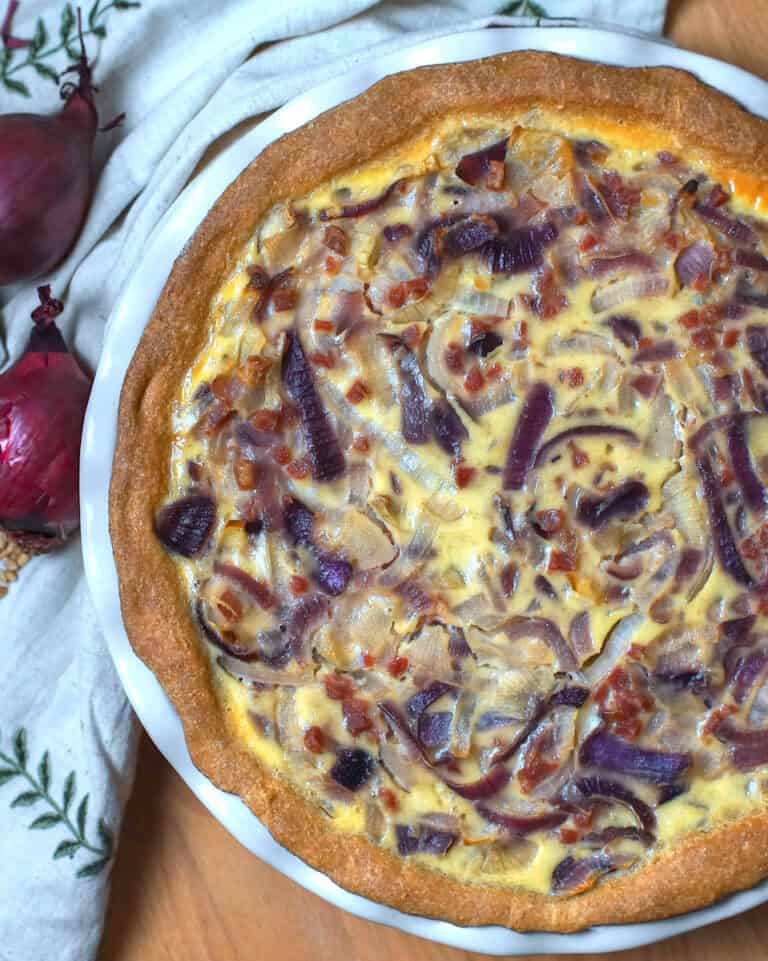
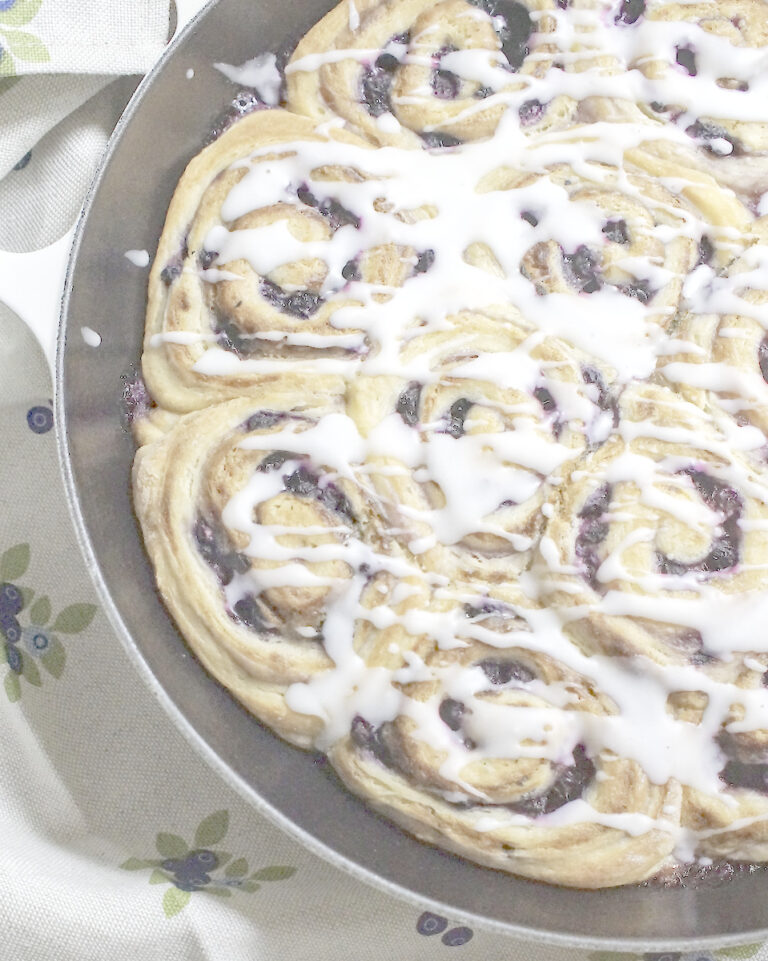
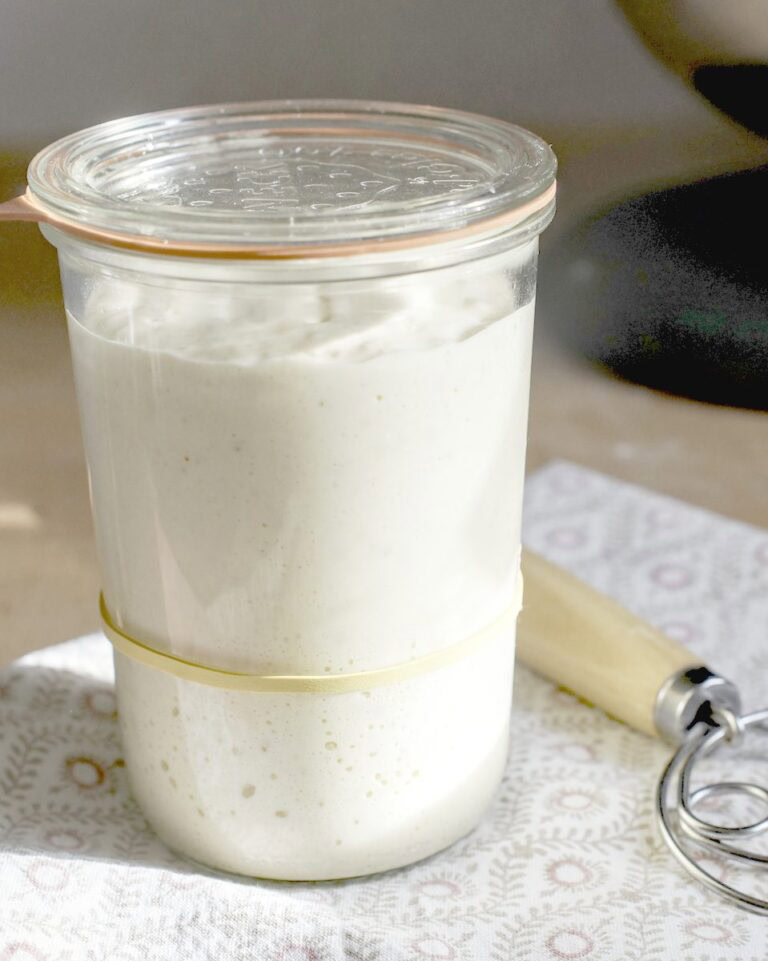



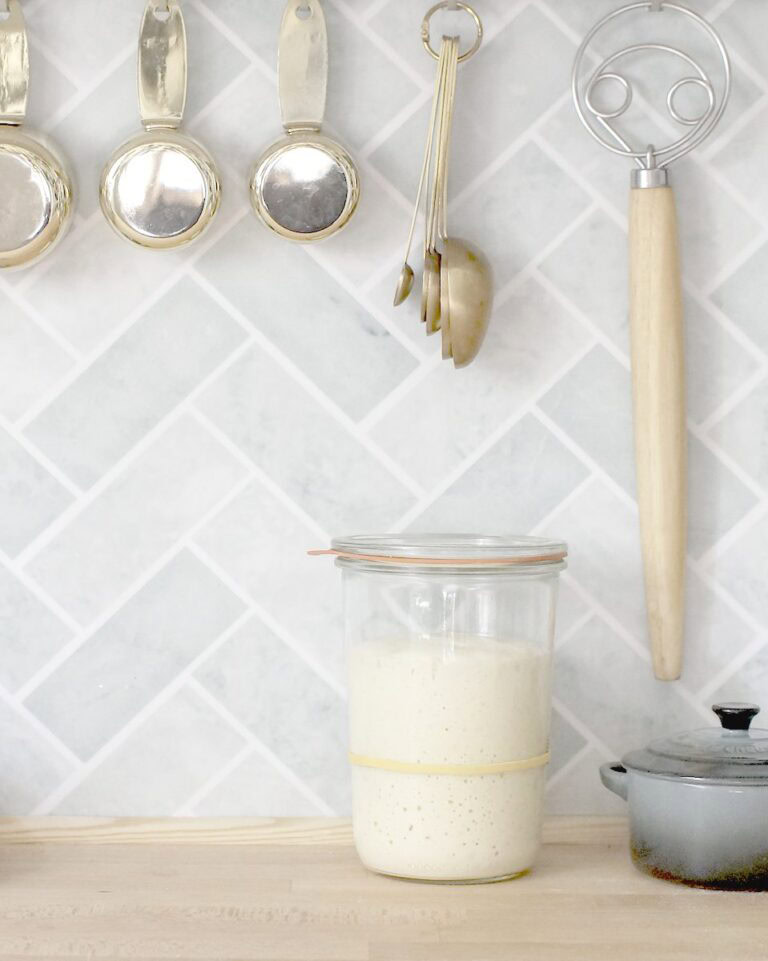
I baked an apple pie the other day and was not happy with the dough of that recipe – it was difficult to work with. I made this one with about 2/3 freshly milled Einkorn and spelt and the rest was white spelt flour. It is really easy to work with! I used 3 tsp of sugar for the doubled recipe because I made another apple pie. I doubled the recipe because I wanted a top crust and sprinkled some brown sugar on top as well. It was very well received!
I had some leftover dough and used it to make two mini savory quiches with veggies. However, I used the dough for the apple pie after about one hour in the fridge and would not let it sit there for longer for a sweet filling. That said, I will use this recipe again both for sweet and savory filling.